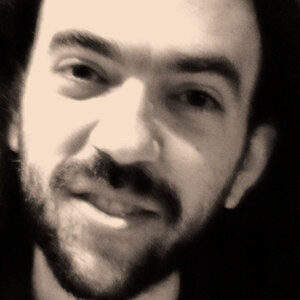Search Results
Back to JTS Torah Online's Main page
It Passes and We Stay
Apr 21, 2023 By Jan Uhrbach | Commentary | Metzora | Shabbat Rosh Hodesh | Tazria
The double parashiyot of Tazria and Metzora are devoted in their entireties to the Biblical notion of tumah, usually translated as “impurity.” In them, we learn three of the major sources of tumah: childbirth (Lev. 12); a condition known as tzara’at, which can manifest on skin, clothing, or the walls of one’s house (Lev. 13–14); and bodily secretions (Lev. 15). The two other primary sources of tumah are touching or carrying the carcasses of certain animals (Lev. 11) and contact with a human corpse (Num. 19).
But what is the essential nature of tumah, and what does it have to do with Emily Dickinson’s poem?
Read More
The Values of a Jewish Home
Apr 16, 2021 By Matthew Berkowitz | Commentary | Metzora | Tazria | Yom Hazikaron-Yom Ha'atzma'ut
In the precious days “Before the Coronavirus Era” (B.C.E.), the parshiyot of Tazria-Metzora seemed wholly disconnected from our lives, presenting the perennial challenge of relevance (or irrelevance) to even the most talented darshan (sermonizer). How are we to connect leprous plagues attacking both body and abode to our daily lives? And to what extent does the experience of quarantine resonate with our modern reality? These are only two of the many questions that we would have posed in a pre-Covid world.
Living Outside the Camp
Apr 24, 2020 By | Commentary | Metzora | Tazria
For many of us, the Torah portions of Tazria and Metzora have never felt so relevant. While in years past there was a great sense of distance from the confusing descriptions of biblical skin afflictions, the quarantine of afflicted Israelites, and the complex post-illness purification process, it feels difficult to escape their prescience during our current global pandemic. As we all struggle with the challenges of social distancing and the uncertainty of the future, I believe that insights into the details of our parshiyot can provide us with points of reflection for our present reality.
Read More
It Passes and We Stay
Apr 20, 2018 By Jan Uhrbach | Commentary | Metzora | Tazria
A Light exists in Spring
Not present on the Year
At any other period—
When March is scarcely here
The double parashiyot of Tazria and Metzora are devoted in their entireties to the Biblical notion of tumah, usually translated as “impurity.” In them, we learn three of the major sources of tumah: childbirth (Lev. 12); a condition known as tzara’at, which can manifest on skin, clothing, or the walls of one’s house (Lev. 13–14); and bodily secretions (Lev. 15). The two other primary sources of tumah are touching or carrying the carcasses of certain animals (Lev. 11) and contact with a human corpse (Num. 19).
Read More
Gender Inside and Outside the Camp
Apr 28, 2017 By Joy Ladin | Commentary | Metzora | Tazria
The idea that others would examine and report on intimate details of our bodies—that such things would be of communal concern, and subject us to institutional regulation—may seem archaic. But as transgender people know, when it comes to gender, this kind of surveillance is alive and well.
Read More
Guarding Our Tongues
Apr 28, 2017 By Abigail Uhrman | Commentary | Metzora | Tazria
Becoming is better than being.
—Carol Dweck, Mindset: The New Psychology of Success
This week’s parashah discusses tzara’at, a skin disease understood in rabbinic tradition as punishment for lashon hara, evil speech. The public castigation that the metzora suffers is a powerful warning for us to “guard our tongues.” It was with words that God created the world, and our words have potential to build, create, and sustain life and human dignity, or to be a source of pain and destruction.
Read More
Inside Out
Apr 15, 2016 By Ally Sterling | Commentary | Metzora
This week’s parashah, Metzora, details the special procedures a kohen performs to purify the recovered metzora (a person suffering from some kind of skin condition), tzara’at in the home, and ritual impurity. Metzora is about the insides (childbirth and emissions) and outsides (skin afflictions) of the body. I created Inside Out as part of a series of biological drawings that explores the beauty and intricateness of the inner workings of the human body. When I made Inside Out, I wanted to explore the different functions and shapes of human anatomy and physiology, and also the way in which everything is connected.
Read More
Deeper Than the Skin
Apr 24, 2015 By Yitzhak Lewis | Commentary | Metzora | Tazria
Your body is a map of roads
To be taken,
And not taken
Alone.
Your skin enfolds what
Your eyes shut behind them,
All your past is bored into it
Every day with the awl of time.

Outside the Camp
Apr 24, 2015 By Julia Andelman | Commentary | Metzora | Tazria
The double parashah of Tazria-Metzora ranks at the top of the list of parshiyot to avoid for a bar or bat mitzvah. Its detailed lists of bodily ailments—rashes, colorations, emissions, and secretions—associated with ritual impurity are not the stuff of religious inspiration in contemporary times. I confess to having once colluded with congregants to subtly move the date of their daughter’s bat mitzvah celebration slightly further away from her Hebrew birthday, in order to provide her with a more palatable Torah reading to chant and speak about than Tazria-Metzora. But this year—the year of #BlackLivesMatter—has caused me to read Tazria-Metzora through a new and painfully relevant lens.
Read More
Paying Attention to Our Bodies and Ourselves
Apr 3, 2014 By William Friedman | Commentary | Metzora
What are the rituals that help us transition from one experience to another?
Read More
Boundaries: Not Only Healthy, but Divine
Apr 3, 2014 By Matthew Berkowitz | Commentary | Metzora
Boundaries are the focal point of Parashat Metzora, and indeed they are the obsession of the book of Leviticus.
Read More
Land, Language, and Leprosy
Apr 10, 2013 By Matthew Berkowitz | Commentary | Metzora | Tazria
The second of this week’s parashiyot, Metzora, is an enigma on so many levels.
Read More
The Torah’s Prescription for Healing
Apr 9, 2013 By Alan Cooper | Commentary | Metzora | Tazria
At a glance, the opening chapters of Parashat Metzora seem like a biblical antecedent of WebMD. Leviticus 13 describes the disfiguring symptoms of צרעת/tzara`at, starting with “a swelling, a rash, or a discoloration” that “develops into a scaly affection” (Lev. 13:1).
Read More
Authentic Judaism
Apr 28, 2012 By Andrew Shugerman | Commentary | Text Study | Metzora | Tazria
Many modern Jews have declared the opening verses of this week’s Torah portion not just arcane, but misogynist. Indeed, the laws regarding postpartum impurity emerge from a priestly world of sacrifices and distinctions that seems distant today. Our ancient Sages, however, radically reinterpreted that passage and the creation of humanity in Genesis with playful translations that provide an opening for insights into the origins of gender.
Read More
Metzora: Disease or Dis-ease?
Apr 9, 2011 By Leonard A. Sharzer | Commentary | Metzora
When I tell people that Parashat Metzora and Parashat Tazri·a, which we read last week, are among my favorite parashiyot, they often respond, “Well of course, you were a physician and they are filled with medical information.” But if Tazri·a and Metzora are to be read as medical texts, there would be very little point in reading them at all. For one thing, the dominant subject of the texts is something called tzara’at and we really have no idea what that is. Though often translated as leprosy, modern scholarship is quite consistent that whatever the condition is, it is not what modern medicine knows as leprosy. More importantly, besides not knowing what the described condition really is or precisely what some of the specific terms mean, I would like to suggest that these chapters were never intended to be read as medical texts.
Read More
Humanity: Both Glory and Shame
Apr 9, 2011 By Abigail Treu | Commentary | Text Study | Metzora
Rabbi Morris Shapiro (z”l) spent his last years teaching in the JTS beit midrash. He was a Holocaust survivor and arguably one of the best talmudic minds of his generation, and we who had the privilege of learning with him here knew well that one of his most frequently cited teachings was the phrase this midrash brings to mind: know before Whom you stand.
Read More
Healing of Body and Mind
Apr 16, 2010 By Arnold M. Eisen | Commentary | Metzora | Tazria
The Baal Shem Tov, seeking the sort of symbolic meaning in this week’s section of Leviticus that we too search out, found the laws of scaling and scalding, bodily discharge, and fungus in the warp and woof of fabric suggestive of the need for repentance and humility.
Read More

Realizing Our Human Potential
Apr 25, 2009 By Alan Cooper | Commentary | Metzora | Tazria
This week’s double dose of purity laws is unlikely to top anyone’s list of favorite Torah portions. While the laws may be discomfiting and obscure, however, they also are fundamental to an understanding of biblical theology and anthropology, and they convey a message that transcends their particular details.
Read More
Completing Creation
Apr 17, 2009 By Ismar Schorsch | Commentary | Metzora | Tazria
One of the better known rabbinic midrashim connects the disease of leprosy with the sin of slandering: that is, God afflicts the slanderer with leprosy (B.T. Arakhin 15b). Underlying the connection is the close resemblance in the Hebrew words for each. According to Resh Lakish, who authored this midrash in the third century long after the Temple had been leveled, the biblical term for leprosy, metzora (Leviticus 14:1), is but a compressed form of the rabbinic term for slandering, motzi shem ra (literally, to give someone a bad name). Even to an ear untrained in Hebrew, the similarity in sounds of this clever identification is apparent.
Read More
Finding Holiness Through Boundaries
Apr 12, 2008 By David M. Ackerman | Commentary | Metzora
The Book of Vayikra concerns itself with a truly interesting collection of topics, among them animal sacrifice, priestly behavior, food, skin diseases, and blood.
Read MoreSUBSCRIBE TO TORAH FROM JTS
Our regular commentaries and videos are a great way to stay intellectually and spiritually engaged with Jewish thought and wisdom.




